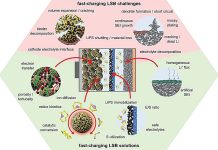
In a new study, researchers have developed a new device that can generate electricity from snowfall.
The device can work in remote areas because it creates its own power and does not need batteries.
The research was conducted by UCLA researchers and colleagues.
In the study, the team developed the new device that is inexpensive, small, thin and flexible like a sheet of plastic. It is called snow-based triboelectric nanogenerator, or snow TENG.
In the device, a triboelectric nanogenerator can produce energy from the exchange of electrons. The nanogenerator can generate charge through static electricity.
The device can use information from a weather report about the amount and direction of snow is falling and the direction and speed of the wind.
The researchers suggest that the new device makes full use of static electricity.
Static electricity can occur from the interaction of one material that captures electrons and another that gives up electrons.
When you separate the charges, you can generate electricity.
Snow is positively charged and gives up electrons. The researchers aimed to find another material with the opposite charge and extract the charge to create electricity.
They chose silicone, which is composed of silicon atoms and oxygen atoms, combined with carbon, hydrogen and other elements.
The team found that when falling snow contacts the surface of silicone, it can produce a charge that the device captures and create electricity.
The finding is very important for the energy industry. Currently, about 30% of the Earth’s surface is covered by snow each winter.
The snow makes it hard for solar panels to collect solar energy.
The researchers suggest that the new device can be added to solar panels to provide a continuous power supply.
It can be used in many areas, such as monitoring winter sports and helping improve an athlete’s performance.
It also can be used in wearable devices to track walking, running, jumping or marching.
The team believes their device is inexpensive and can be manufactured easily.
The senior author of the study is Richard Kaner, who holds UCLA’s Dr. Myung Ki Hong Endowed Chair in Materials Innovation.
The study is published in Nano Energy.
Copyright © 2019 Knowridge Science Report. All rights reserved.



